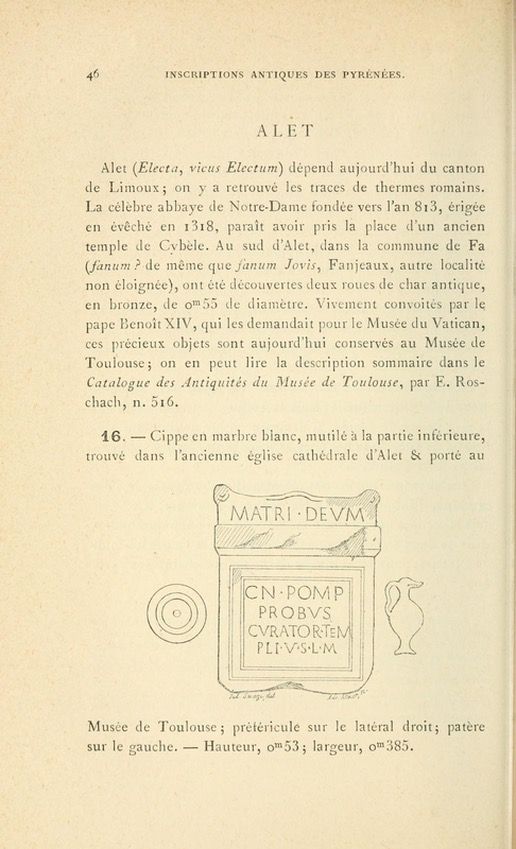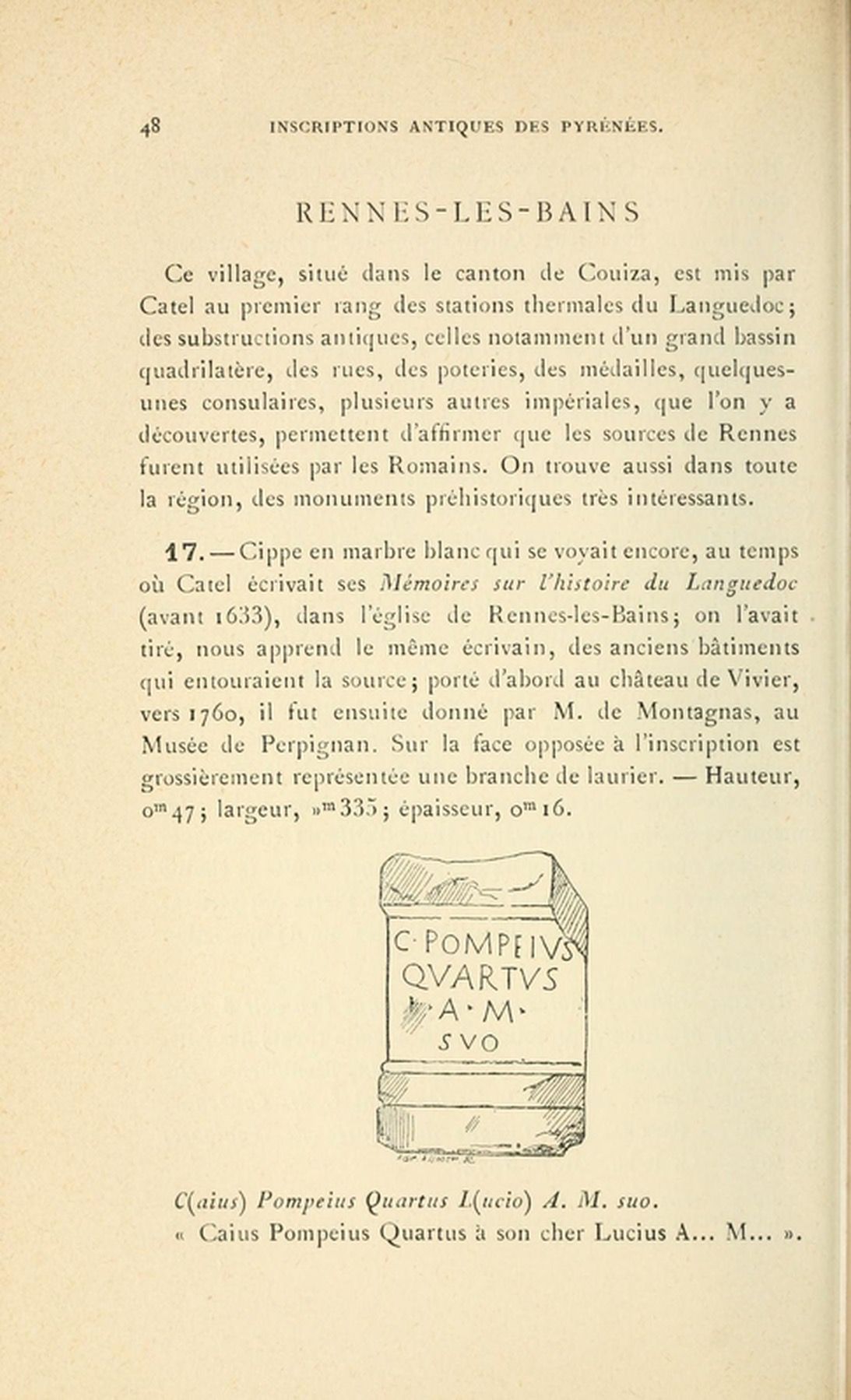Gnaeus Pompeius
In 'LE COMTE DE RAZES et le DIOCESE D'ALET - Notices historiques' - Fédié wrote;
"On the other hand, no monument, no civil or religious edifice of Roman origin has been found at Alet, which is likely to have been an ancient oppidum which was transformed into a simple town. It was believed that one could find at Alet the remains of an ancient temple of Diana on the site occupied by the ruins of the old cathedral of Sainte-Marie, but there is no evidence that this assertion can be based on. We wanted to relate the existence of this pagan temple from the discovery of a pillar or votive altar found at Alet, and that bears the following inscription;
MATRI DEUM
CN POMP. PROBUS
CURATOR TEM
PLI. VSLM
We would note that there is a great similarity between this inscription and the one that appears on a sandstone plaque which was discovered at Bains de Rennes, more than a century ago, in a piece of old wall surrounding the source of the Reine.
C.POMPEIUS
QUARTUS.
P. AMSVO.
The near identical aspects of these two inscriptions leads us to believe that they are the work of the same character, Gnaeus Pompeius, and that he was simultaneously a farmer(?) at the baths of Rennes and spas of Alet. On the other hand, we know that the Romans used to create, close to all the resorts, a small temple, often even a simple sacellum, dedicated to the goddess Hygeia or Thermona nymph who presided over the mineral waters".

